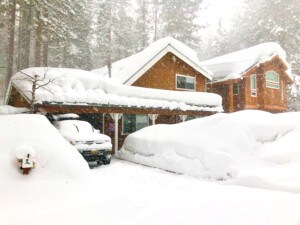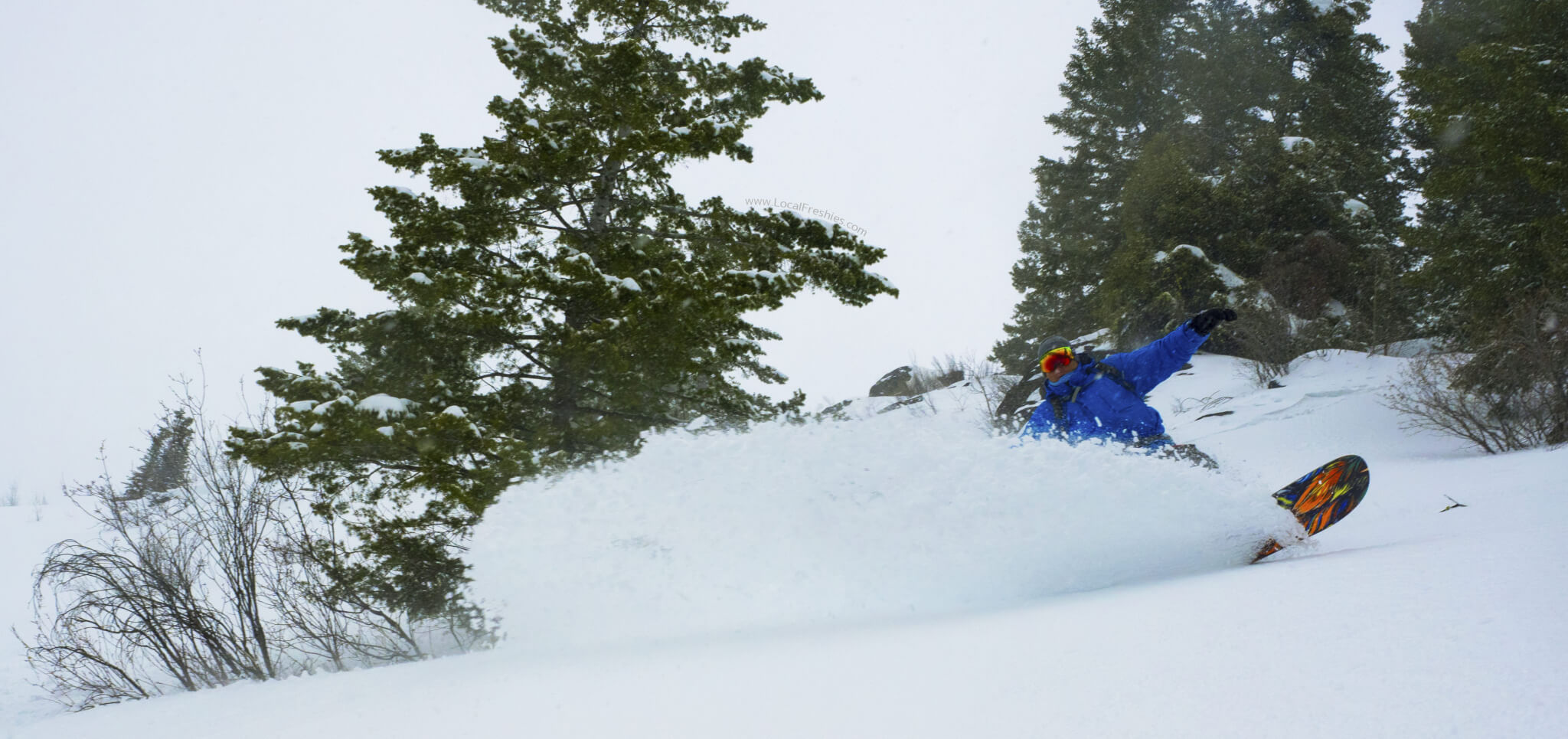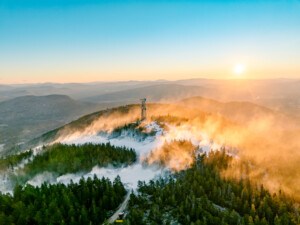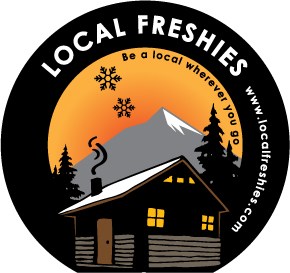As many a skier or snowboarder can attest, even in the snowiest regions there can be weeks before the next big storm rolls in. Sure, snowmaking is a great option to keep those slopes in decent shape. But, what if there was a natural way to get consistent snowfall? Here’s a list of the snowiest ski resorts within the path of a lake effect snow belt that get hammered from a lake effect snow storm.
What Is Lake Effect?

For those from or near the Great Lakes, you know Lake Effect is a unique weather phenomenon that is only appreciated in person. Typically happening a few times per year, it’s when a blast of cold Canadian air blows over the relatively warm waters of the Great Lakes. As the moisture and temperature contrasts meet, it creates instability and generates one or more intense bands of snow that drop copious amounts of the good stuff. These bands of snowfall within a lake effect snow storm can last for days or even weeks, depositing FEET of snow… while ten miles away, there might not be a single snowflake. A sight to behold!
Snowiest Ski Resorts Within A Lake Effect Snowbelt
There’s A LOT of ski areas in the Great Lakes region that get pummeled with lake effect. To keep the list short & concise, we focused on ski areas that get more than 200 inches annually. Without further ado, here’s the snowiest ski resorts within a lake effect snow belt that receive most of their bounty from a lake effect snow storm.
HoliMont / Holiday Valley (Ellicottville)
200 inches
Learn more about HoiMont / Learn more about Holiday Valley

While Holiday Valley has earned big marks in après ski activities (just behind Tremblant & Killington), it also gets pummeled with lake effect from Lake Erie. And on the other side of the cozy hamlet of Ellicotville sits HoliMont, derived from the phrase Holiday Mountain. Dubbed as “North America’s largest private ski resort devoted to family skiing adventures”, it’s open to the public Monday – Friday and private on weekends. Two ski areas, flanked on either side of the fun filled town of Ellicottville, both within a few minutes of travel. Pair that with an assortment of post après fun & you have a winning combination.
Big Powderhorn
210 inches
Learn more about Big Powderhorn Resort

Deep in the Northwoods of western Upper Peninsula is Big Powderhorn. Receiving annually a bountiful 17+ feet of snow from the big body of water known as Lake Superior. Due to its immense consistent snowfall, Big Powderhorn is consistently ranked as one of the top ski resorts in the Midwest annually. Featuring no lift lines, cold temps, and a LOT of fresh snow, it makes sense why it’s one of the region’s favorites. And it’s on the Indy Pass!
Snowriver Resort (Indianhead Mountain / Blackjack)
210 inches
Learn more about Snowriver Resort
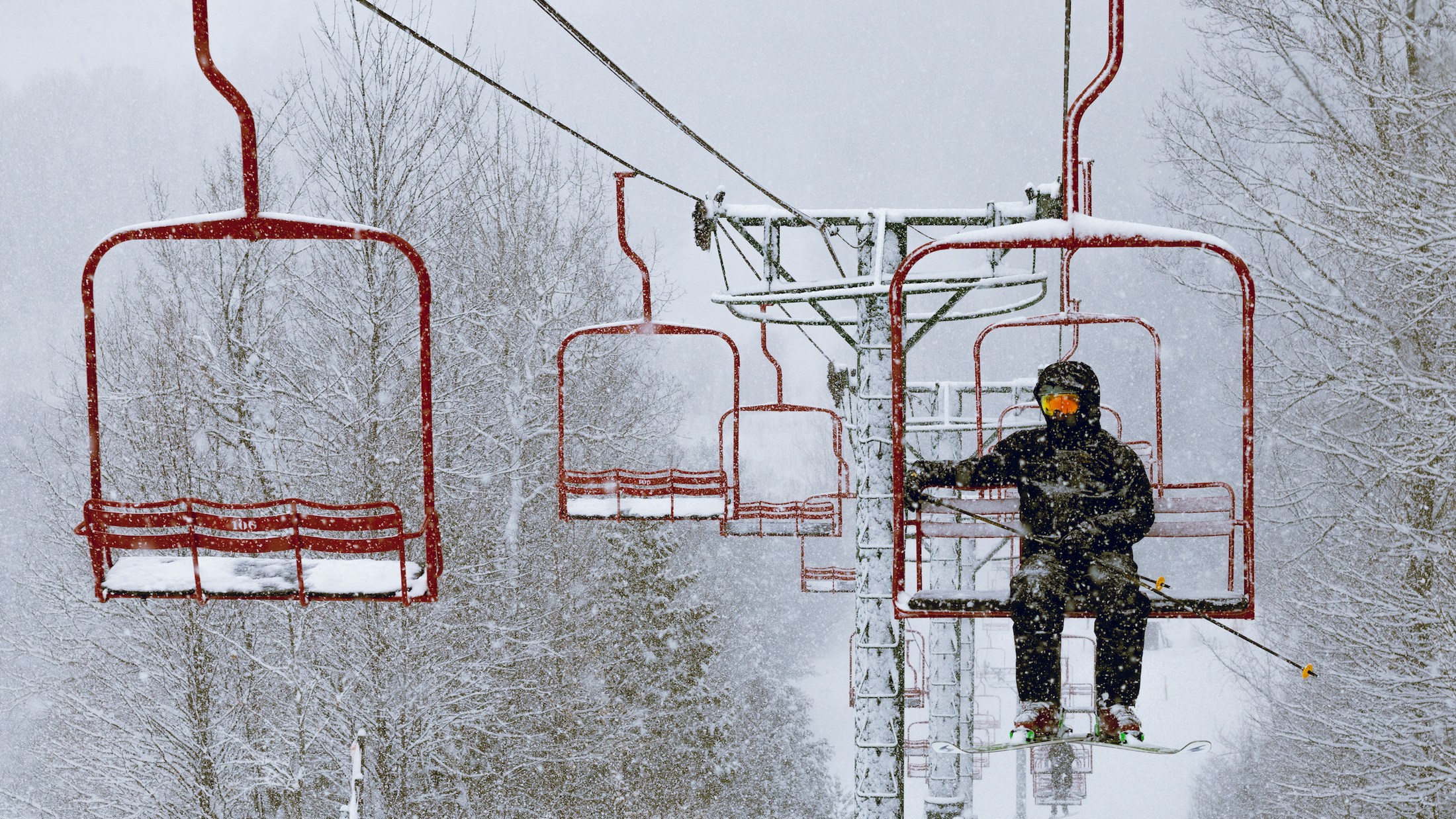
Originally two ski resorts, they merged in 2014 to offer up a bigger and better option for skiers and snowboarders in the Upper Great Lakes region. It’s located in an area known as “Big Snow Country.” So aptly named because of the 200+ inches that fall annually, courtesy of the lake effect from Lake Superior. And is now the home of the first high-speed lift in the Upper Peninsula. This ski area will ALWAYS be one of my favorites. Why? Because it’s where my Dad started my powder addiction and I experienced my 1st TRUE powder day.
Porcupine Mountains
200-250 inches
Learn more about the ‘Porkies’

Located within the 60,000 acre Porcupine Mountains Wilderness State Park, the “Porkies” are a unique experience. The way nature intended it. No snowmaking. No artificial lights. Just you, your equipment, and nearly 20 feet of snow dependably fall on these ancient mountains every winter due to Lake Superior. Being within such a massive park & over 200+ miles from the nearest metropolitan area, it means you’ll pretty much have the place all to yourself. Be sure to bring your backcountry gear as they even offer an additional 40 acres of inbounds backcountry skiing.
Snow Ridge
230 inches
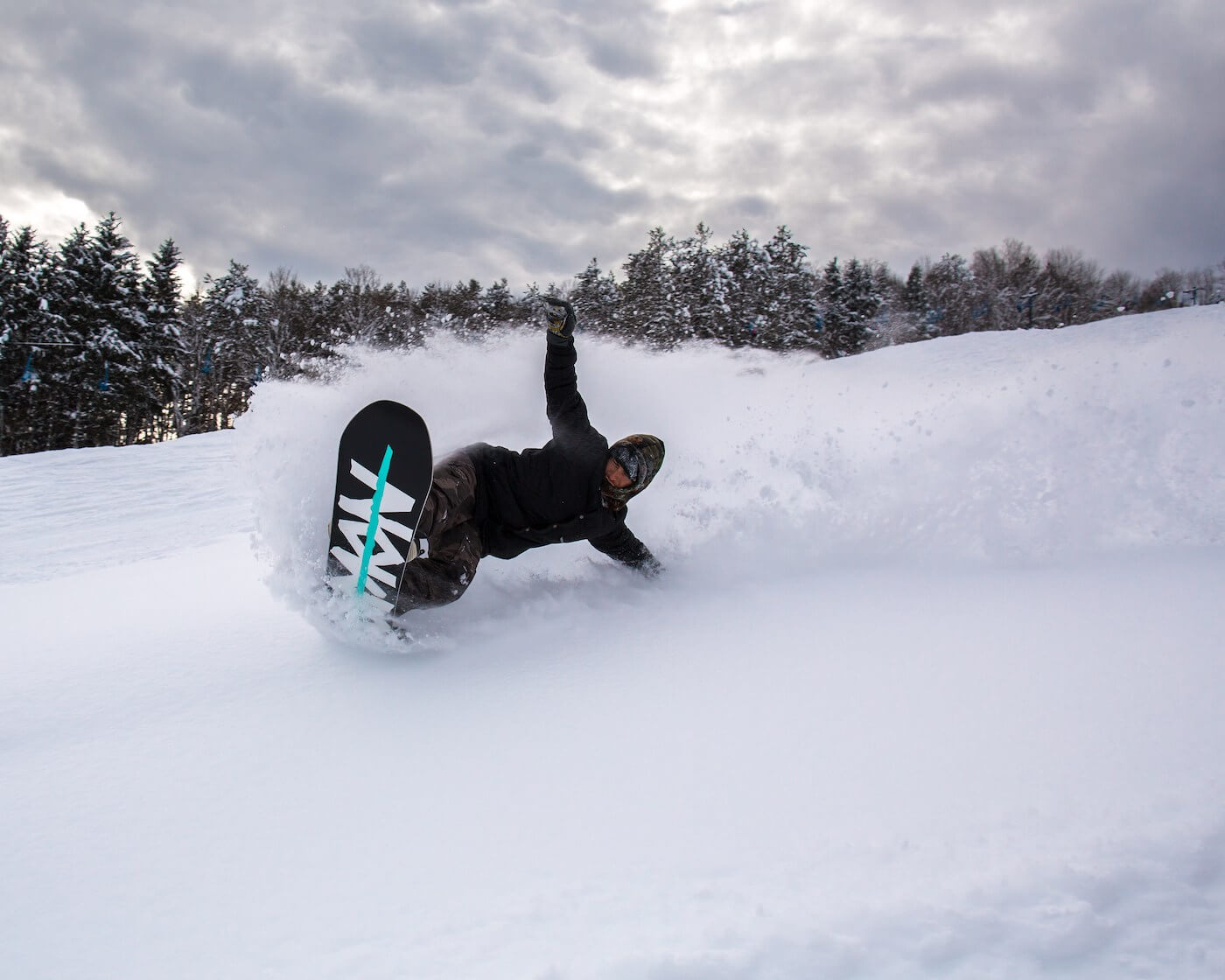
Instagram @nicolarinaldo
Located in the infamous “Tug Hill Plateau” at an elevation of 2,000 feet, they get quite a bit more snow compared to the nearby ski areas. While this isn’t tall per-say compared to the mountains out West, it does help intensify the lake effect snows to setup & slam the Tug Hill plateau (east of Lake Ontario). In fact, this region frequently sets daily records for snowfall in the United States. With a record snowfall of 374 inches in one winter season, Snow Ridge Ski Resort lives up to its title of having the heaviest snowfall in the East.
Mt Bohemia
273 inches

Mt Bohemia is located in the Upper Peninsula region of Michigan on what is called the Keweenaw Peninsula. This region averages more snowfall than nearly anywhere in the United States. More than anywhere east of the Mississippi River and the most of all non-mountainous regions of the continental United States. How come? Well, due to the Keweenaw being almost entirely surrounded by Lake Superior, the lake effect snow can occur with any wind direction. The area is so proud of their record 390 inches set in 1978-79, they put up a snow-mometer. Combine that with some awesome ungroomed slopes, and you got yourself a perfect mountain to shred. Not enough? They now serve up cat-skiing as well!
McCauley Mountain (Old Forge)
280 inches
Learn more about McCauley Mountain
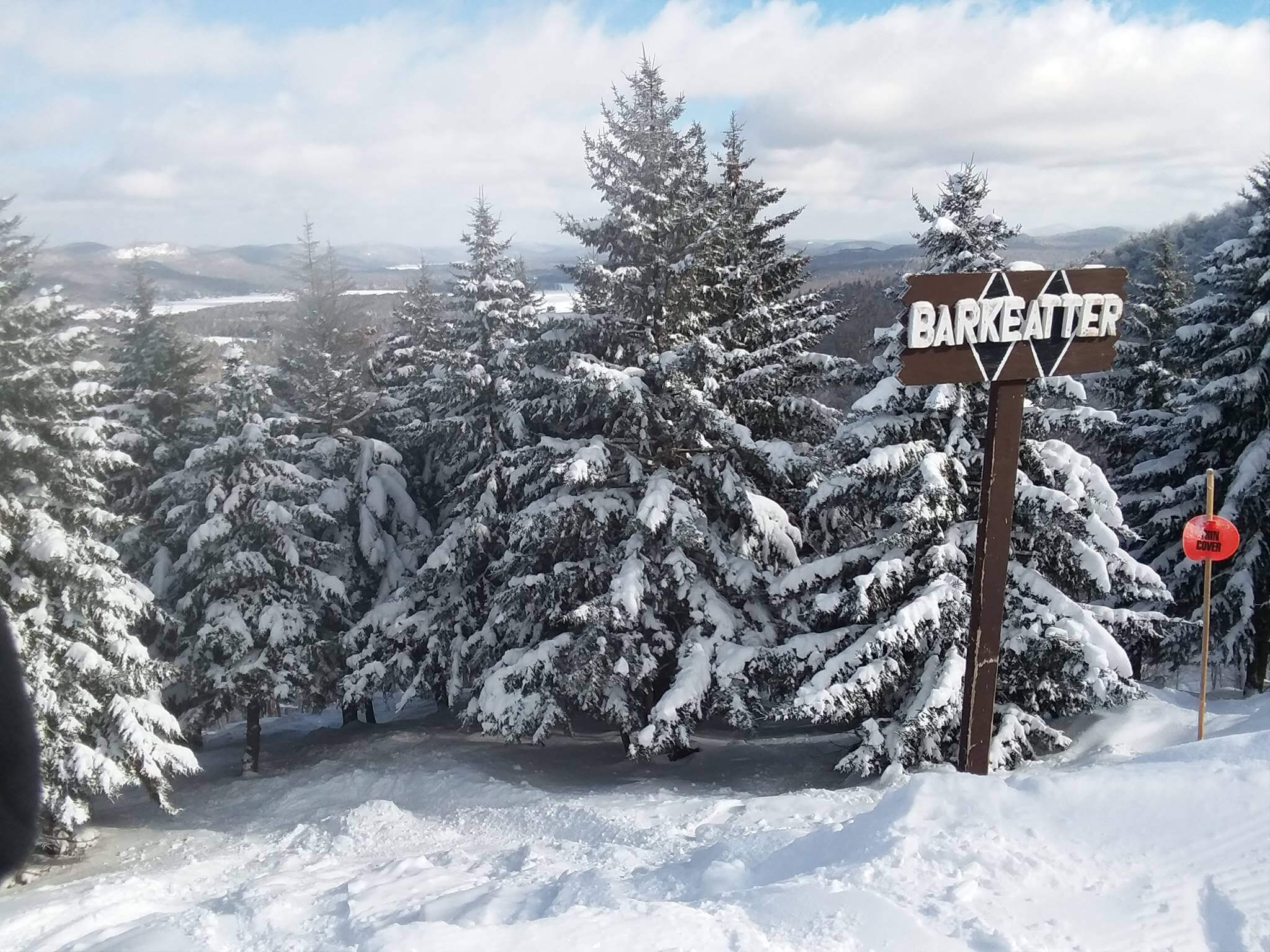
As Mark Twain so eloquently said, “It’s not the size of the dog in the fight, it’s the size of the fight in the dog.” And that’s what McCauley Mountain is all about. On paper, it reads 240 acres & 633 vertical feet. But it packs a BIG punch for a ski area its size. Nearly every acre of McCauley is filled with a variety of terrain that you’d find at resorts three times its size. Along with the terrain, it also gets pounded when a lake effect snow storm arrives. So much so that they get nearly double the snowfall as the other ski areas near it. We’re lookin’ at you Whiteface. And with some winters recording over 400 inches, you’re pretty much set for a good day on the slopes.
Honorable Mention – The Great Salt Lake
While Utah resorts typically get their snow from storms, we had to give a shout out to their unique phenomenon. Due to the “orographic” factors of the Wasatch, the great Salt Lake has produced 3 to 20 lake effect snow storms every winter since 1998. Typically, this doesn’t create a snowstorm. Instead, it enhances storms rolling through Utah. That’s why ski resorts like Snowbird, Alta, and Brighton get over 500 inches of snow annually.
So, if you’re looking for an inexpensive lift ticket and good consistent snow without a lift line, these snowiest ski areas in a lake effect snow belt region will do the trick. For more interesting facts about ski weather phenomenon like what were the biggest snowstorms to hit a ski resort or which resorts are favored to get pummeled in an El Nińo or La Nińa winter, be sure to take a close look at our homepage on all things meteorological:






